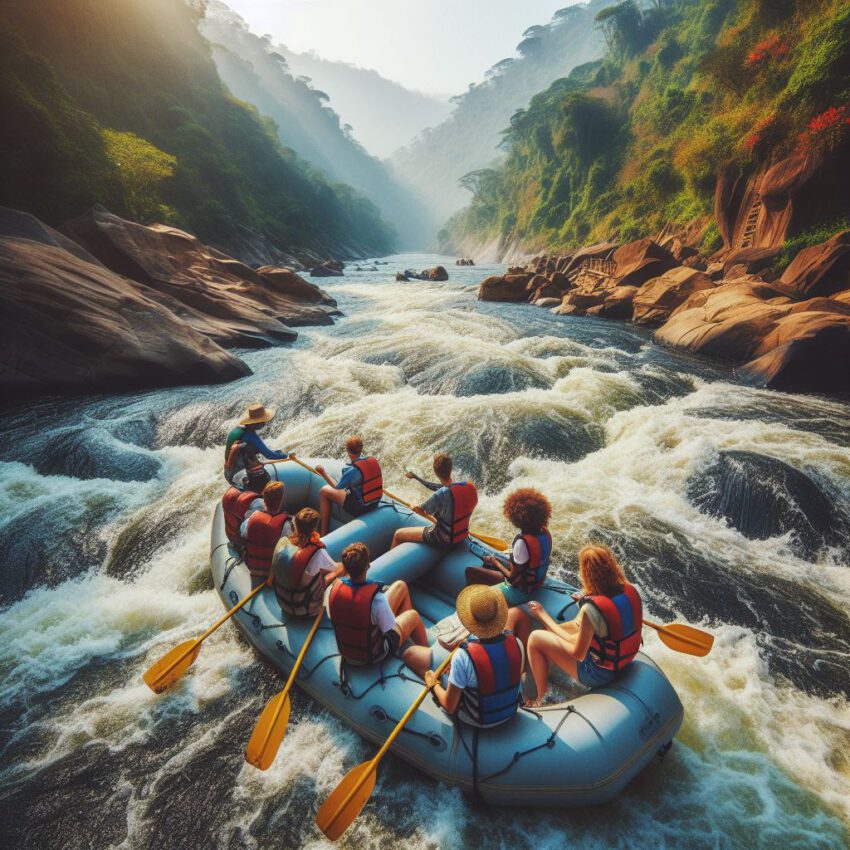(A trip in 1996)
The 1.7 kilometer wide, about 100 meter high Victoria Falls of the Zambezi River were named by David Livingstone, who was guided to them by natives of the Kaloo-Lozi tribe in 1855 (who themselves called Vic Falls their equivalent of ‘Smoke that Thunders’).
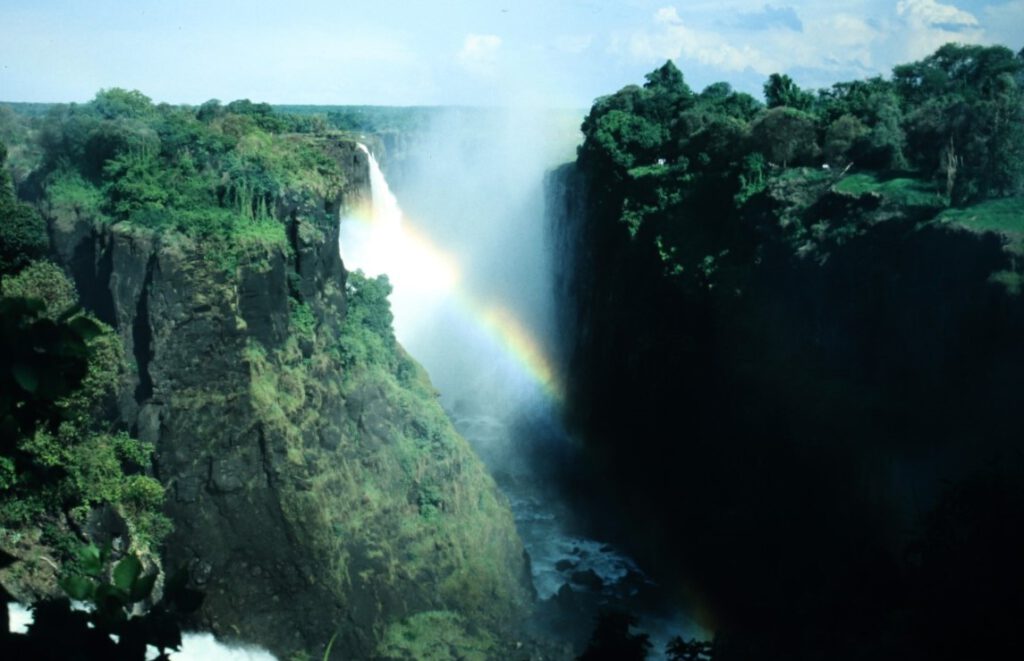
Livingstone wrote in his diary “On sights as beautiful as this, angels in their flights must have gazed.” He was the first Westerner who saw this spectacle.
Unfortunately, the beautiful Victoria Falls on the border between Zimbabwe and Angola have somehow become a giant fun park over the last years – there are loads of companies offering wildwater rafting, bungee jumping, helicopter flights etc. Well, people seem to enjoy it, and it’s certainly generating a lot of money.
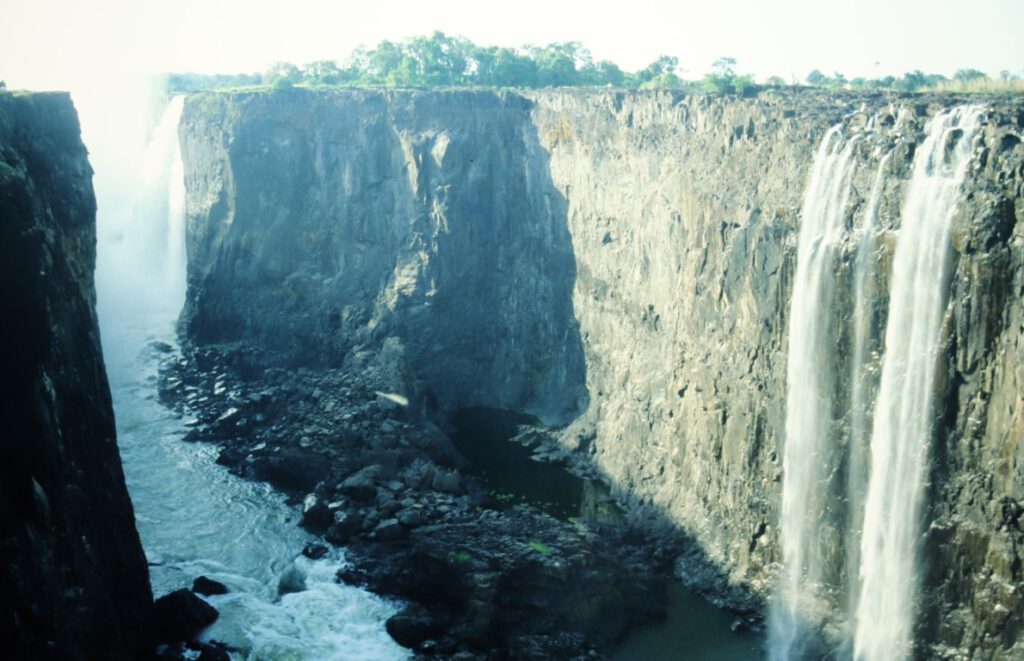
Wildwater Rafting on the Zambezi (in the “Batoka Gorge”) has become an international event due to the extreme difficulty of the rapids, which have names like “Stairway to Heaven”, “The Mother of all rapids”, “Devil’s Toilet Bowl” or “Gnashing Jaws of Death”. Apparently this is the most difficult commercially used rafting course worldwide with rapids of class V (of the I to VI ratings scale), and every year a few people drown.
People love danger, and therefore the number of companies which are offering commercial rafting tours is growing. Before you even start, you have to sign a piece of paper which basically says that you are responsible for everything that could possibly happen and the company cannot be claimed for anything.
So, after signing away my life, I entered the boat with seven other foreigners and one guide. Already at the first rapid I regretted it, when the boat flipped and I had to be picked up by another boat a few hundres meters further down, after having swallowed at least two litres of water.
There are about fifteen rapids which have to be mastered, although one of them, being the most difficult, is mostly bypassed on foot. We flipped our boat at about half of them, sometimes even somersaulting! Batoka Gorge holds some other challenges as well, such as crocodiles in some places (very few, though), or minefields at the top of one rapid (rapid 11).
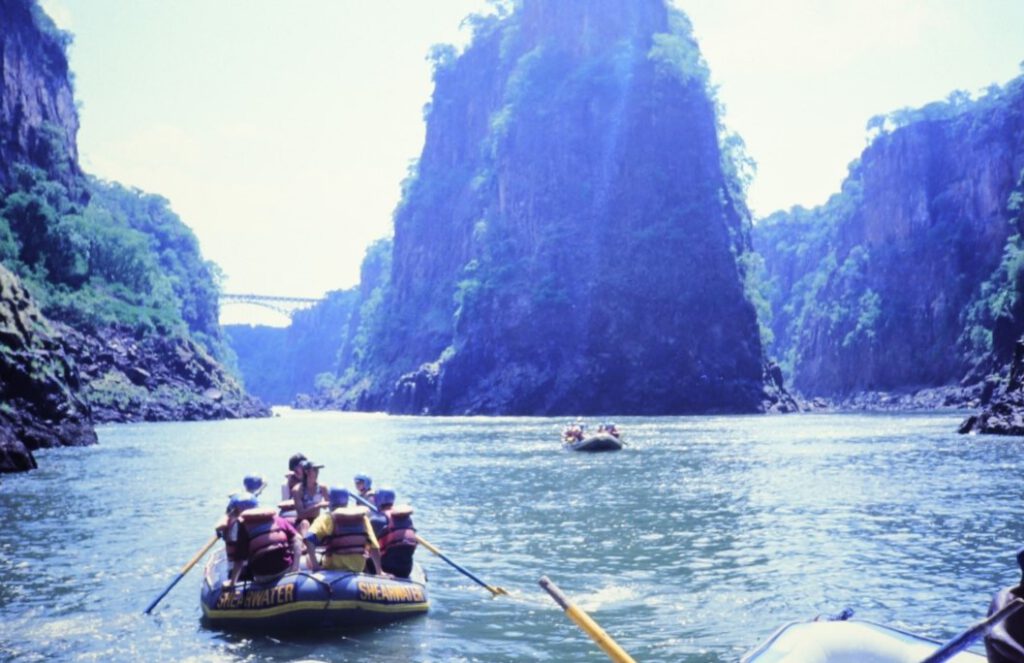
Nevertheless, in the end it was fun, although I drank about half of the Zambesi on that day!
The guides are quite some characters, too. Our guide told me stories which had happened to him over the years: some tourists asked questions like “This is fun! You do it every day – do you have to pay for that?” or, some hours down the course: “The scenery looks familiar to me – is this the same place we started from this morning?”
At one time they wanted to make some fun of the tourists, so they came up with a plot: One of the guides disguised himself as a normal tourist, taking part in the rafting like everyone else.
So there he was, sitting on one of those boats being guided (and steered) by another guide. Sometime along the way, in a particular nasty rapid, the “real” guide fell off the boat, leaving the tourists (with the disguised guide among them) on their own. Naturally, the tourists freaked, as the boat drifted towards the next rapid without the guide.
Well, the plan was that the “undercover” guide should take over, obviously. He didn’t get a chance! One of the tourists jumped towards the paddles, grabbed them and shouted: “I am a British Navy officer. This boat is from now on under my command!” The “undercover” guide had a hard time of taking back control!
David Livingstone probably did some major rafting himself. After returning from his Africa expedition to England in 1856, he was celebrated as a hero and the discoverer of Victoria Falls. Livingstone returned to Africa in 1858 with an expedition of the British Royal Geographic Society to follow the course of the Zambezi river. But the rapids prevented him from traveling the entire river with a boat, and additionally his wife Mary, whom he had married during his time on a missionary station in Botswana, died from fever. Livingstone nevertheless continued at least until Lake Malawi, becoming the first European to see this huge lake.
Several years later Livingston started to a journey that would make him a legend: the search for the source of the Nile. With a small team he traveled upriver until he became ill and was robbed. For over three years no news from Africa had reached the Royal Geographic Society in London, when Henry Morton Stanley started an expedition to search for Livingstone. After about one year of arduous travel Stanley reached the small village of Udjidji, where he found Livingstone – still ill – and spoke the historic words: “Dr. Livingstone, I presume?”
Both of them continued south and discovered Lake Tanganjika. Livingston went further, up to Lake Bangweoo, but got the fever again and died there in 1873. Two of his companians mumified his body and transported it back to England – a last journey of 1600 kilometres (1000 miles).
By the way, I also did a bungee jump there. You jump of the Victoria falls bridge, at a height of 111 meters. It used to be the highest bungee jump worldwide at the time, but has been surpassed meanwhile (you jump 260 meters at the Zhangjiajie Glass Bridge in China…).
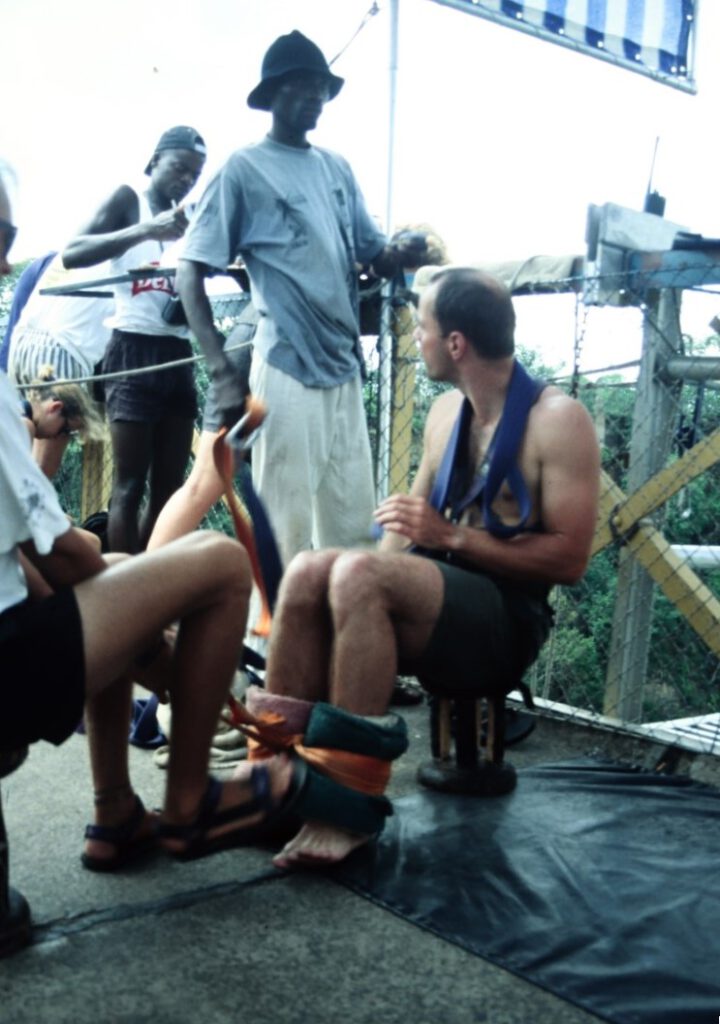
Unfortunately I have no photos of the jump itself…

